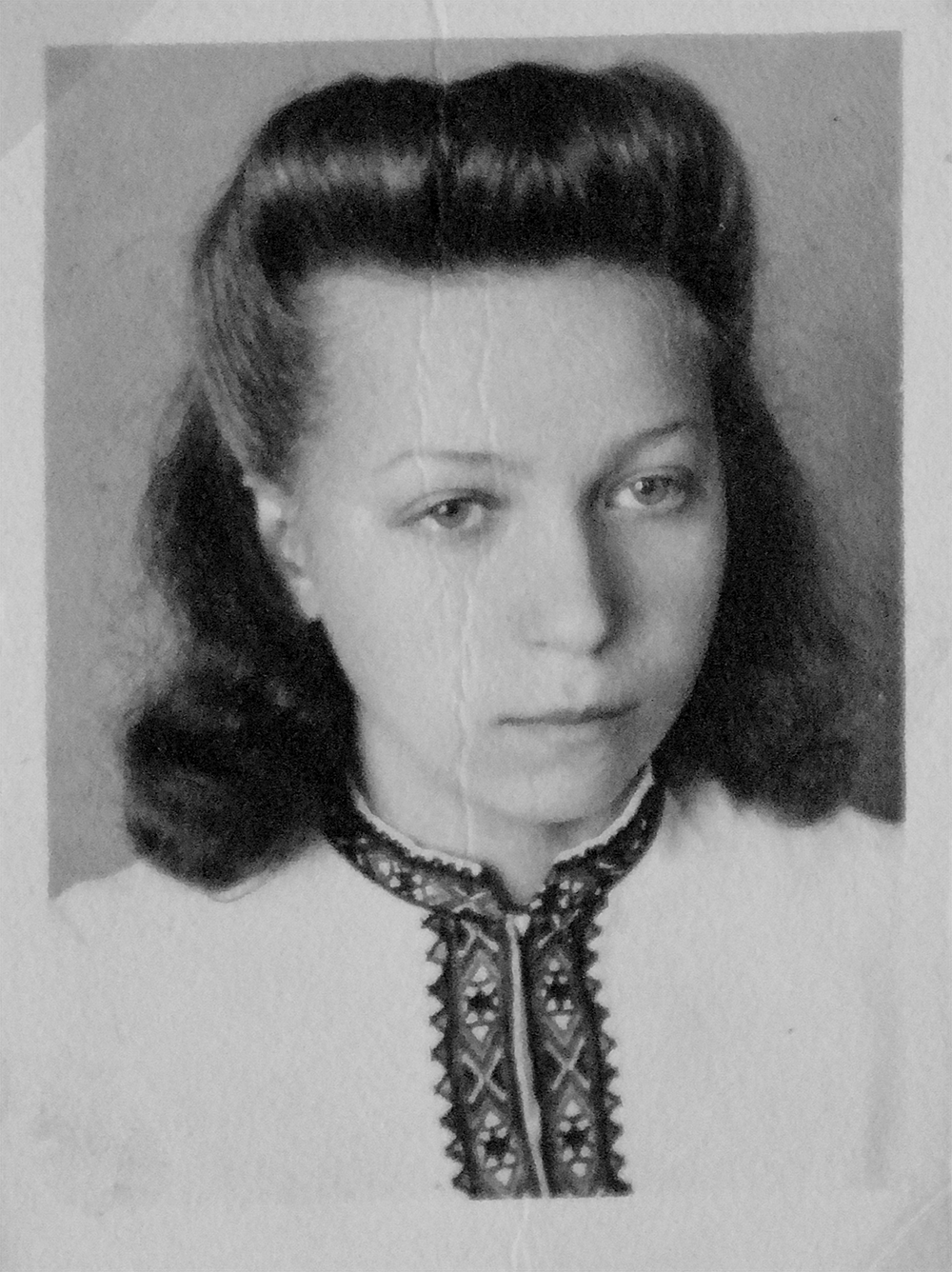A Thousand Voices is a Virtual Reality (VR) exploration and art exhibition that invites intimate and emotional contact with the memories of Ukrainian and Gulag survivor, Ivanna Maszczak. On the 11th of April 1949, Ivanna was sentenced under article 54.2 and 54.11 for counter-revolutionary activity to ten years hard corrective labour. She was transported over ten thousand kilometres from Kyiv to the coastal Gulag camp at Magadan, Kolyma where she remained until her release in 1955.
On one level representative of parts of Ivanna’s journey into the unknown as she travelled to the camps, the exhibition is more crucially an invitation for the participant to journey with Ivanna into the intangible territory where the possibility of connection between self and another; separated by time, history, culture and trauma, resides. As Ivanna says, 'it is not just my story, it is the story of the thousands and thousands that were with me'.
The exhibition comprises of two VR experiences alongside a presentation of photographs, drawings, testimony and other artefacts collected by Ivanna that offer unique insight into Ivanna's experiences, those of the people who were with her and those that she has connected with throughout her life. A collection of orginal artworks by Ivanna also feature in the exhibition.
'I Look For Them' is a VR experience that invites embodied, intimate and emotional contact with the memories of Ivanna Maszczak. Narrated by Ivanna herself, the work is inspired by anecdotes told of her journey across Russia and Siberia in 1949. Participants are invited to explore the virtual space, accessing scenes that are inspired by moments in her journey across Siberia to Magadan; a period of interrogation, transportation via train into the unknown, brief pauses in her journey at one of the many transit camps in which she was held, a dangerous voyage across the Sea of Okhostsk, and finally arriving at the endless expanse of snow on the shores of Magadan.
'Be That Ocean' immerses the participant in a dynamic, layered virtual landscape that offers a space of resonance with the memories of Ivanna Maszczak as she recalls transportation from Ukraine to the coastal Gulag camp, Magadan. Abstracted experiential fragments, created via Ivanna’s stories as context, merge and blend in unpredictable configurations, generating a non-linear and unique process where present experience and the memories of another become entangled. By experimenting with the unique affordances VR offers, the work invites immanent, affective resonance with the experience of another.
Ivanna Maszczak
Ivanna was born on the 11th of July 1925 in the Krupets village, Lubachiv county. She grew up in the Ukrainian family of Joseph Przepiorska, a Greek-Catholic priest, with her mother Irena Marenin, a school teacher, and her three elder brothers, Myroslav, Yuriy, and Vsevolod. She started her education in Horobriv and Sokal, and continued in the gymnasium of Bazylian Sisters in Lviv (1938-1939) and in Belz (until 1942).
In 1945 Ivanna was arrested by Polish police and was held under investigation by Soviet border control security services.
In 1947 Ivanna's family were forcibly resettled to the Olszyn county in Poland during Operation Wisla.
On the 18th of January 1948 Ivanna was arrested by Polish security forces and transferred to Kyiv. On the 11th of April 1949, Ivanna was convicted under article 54.2 and 54.11 for counter-revolutionary activity to ten years hard corrective labour. She was transported over ten thousand kilometres from Kyiv to the coastal Gulag camp at Magadan, Kolyma where she remained until her release in 1955.
In August 1955, Ivanna was transported by plane to Moscow where she was held under quarantine in the Potma-Yavas camp before finally being freed. She was reunited with her mother Irena in the Kentszyn town, Poland. Ivanna completed a librarian's course at the Polish Ministry of Culture and Arts in Gdynia in 1960.
In 1965, Ivanna moved to London where she met her husband, Volodymyr Maszczak. Ivanna worked at the AUGB in London, the largest organisation that supports the Ukrainian community in the UK. She has become well known for her water colour artworks that have been presented at her exhibitions 'Spring Mosaic' in June 2010, and 'Colours of Art' in April 2015.
